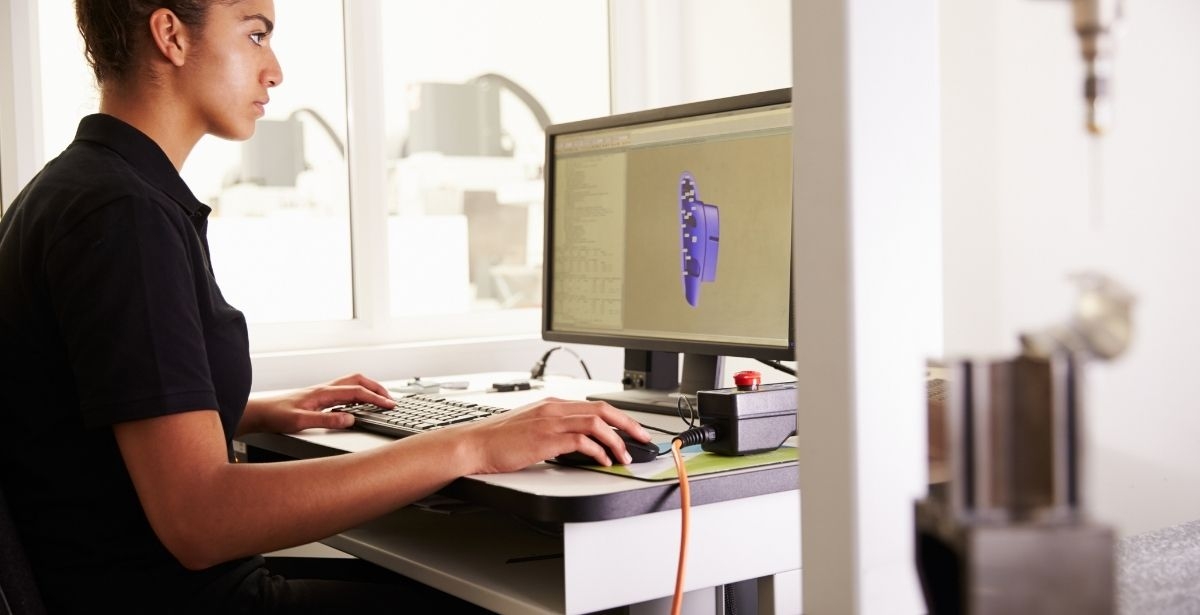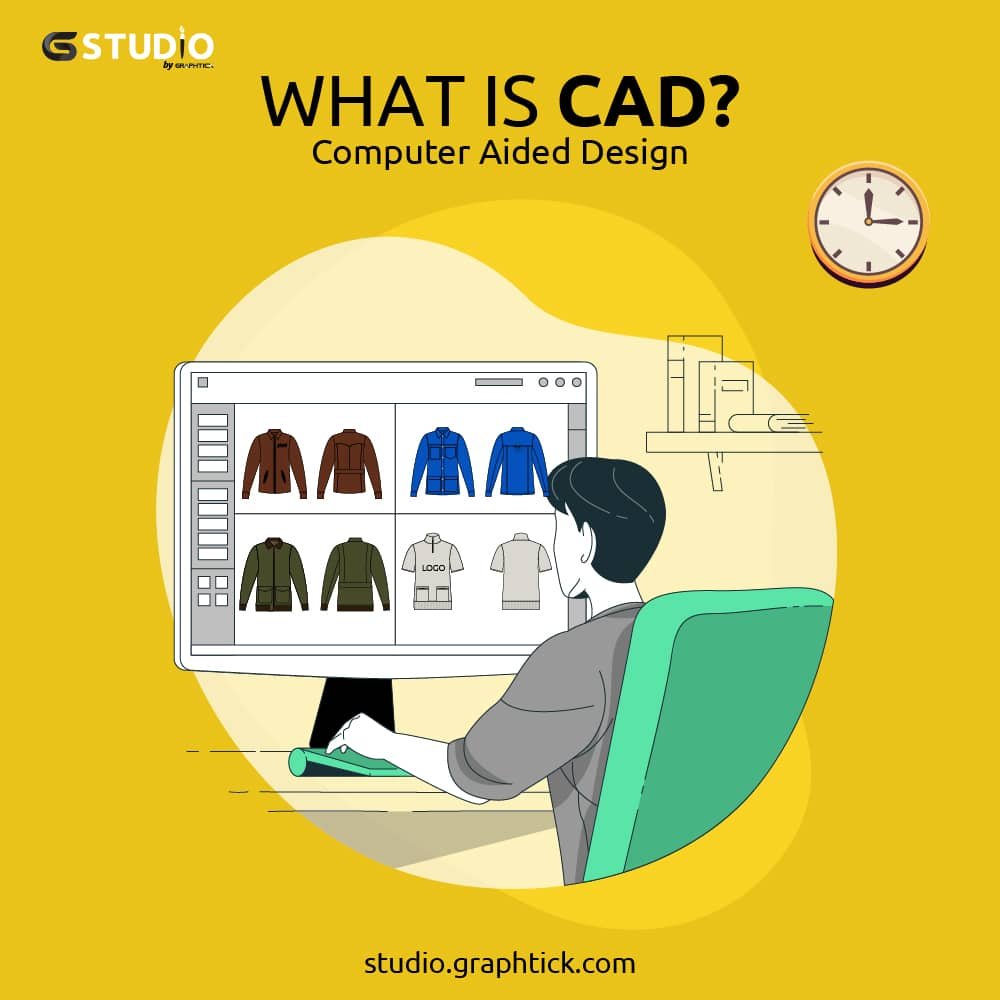Table Of Content

CAD plays a crucial role in the 3D printing process by offering the digital design files required for layer-by-layer printing of items. Using CAD software, designers produce 3D models that have precise dimensions, forms, and features. Then, these digital designs are exported in file formats that work with 3D printers, such as OBJ or STL. Production and prototyping may happen quickly because of CAD's precise and adaptable construction. Computer-aided design (CAD) or 3D CAD software is used to create, analyze or change two or three-dimensional designs and models in a digital environment rather than using manual drafting methods.
What Are the Types of CAD?
CAD (Computer-Aided Design) has revolutionized the design industry by offering numerous benefits to professionals. In this section, we will discuss some of the major CAD benefits that make it an indispensable tool for designers. In the 1980s, with the introduction of personal computers, CAD software became more accessible and affordable for smaller businesses and individuals. Finally, remember that not all CAD programs are compatible with all operating systems. While some run on Windows, others are only available on Mac, and not every CAD software is available on mobile operating systems.
Just in Time Delivery in Construction: Minimizing Waste, Maximizing Efficiency
Integrating CAD and CAM into product development workflows can help streamline the design process and provide high cost and time savings. Autodesk’s integrated, cloud CAD/CAM software, Fusion 360, is for many applications—from industrial design to PCB design. Today, Fusion 360 is spearheading the effort to make the design process quick, easy, and affordable.

Interior design
This feature saves time and allows for greater flexibility in the design process. CAD software allows for improved collaboration among designers, engineers, and other stakeholders. Design teams can easily share designs and provide feedback, leading to more effective communication and collaboration. This also reduces the risk of miscommunication and errors, leading to better design outcomes.
Autodesk University online classes (US Site)
Realization – As well as improving the design process, using CAD can also accelerate the manufacturing process. By using compatible computer-aided manufacturing (CAM) software, you can easily check the tool paths for CNC machining and input the files in the machines. CAM software creates the required machine code for production based just off the CAD model, providing a much more efficient method than traditional manufacturing processes. Computer-aided design (CAD) is the use of computer technology by architects, engineers, and others for design and drawing.

From simple machine parts to complex aerospace systems, CAD solutions have become an indispensable tool for creating, simulating, and optimizing mechanical components. With CAD, mechanical engineers can design and produce products in less time while ensuring accurate and consistent results. The utilization of CAD spans across diverse industries, including architecture, engineering, manufacturing, and construction. Additionally, it finds widespread application in product design, automotive design, and film animation. Advancements in computing power, along with the development of new technologies such as cloud computing and virtual reality, are continuing to drive the evolution of CAD technology.
What are the most popular CAD programs? - ENGINEERING.com
What are the most popular CAD programs?.
Posted: Sun, 04 Feb 2024 08:00:00 GMT [source]
This has always been the case — but with the introduction of computer-aided design (CAD), technology’s role in the industry and the impact it has on the job have both grown. The one that’s best for a particular project will depend on your project’s requirements and specifications. Blueprinting was one of the first innovations to streamline the design process and contributed significantly to the second industrial revolution. Such innovations were designed to create cheaper and easier ways to accomplish tasks. Because we do live and work in a digital world, ACC’s CAD classes regularly attract students who are already working in the industry and want to update their skills in order to stay relevant.
CAD software/tools
CAD software offers designers the tools to create digital models of products that can be tested and optimized before they go into production. CATIA is a cloud-based design software used for physical modeling and is utilized in many industries. The software is also seen as a top-notch surfacing (developing the shape of an object) tool.
The Role of Humans in AI Software Testing: It’s Bigger Than You Think
According to Rebecca, there are many different types of industry-specific CAD drafting software, capable of producing two-dimensional and three-dimensional designs. Now that we've explored some of the various capabilities of CAD software, let's take a look at how SmartDraw can help you with your designing needs. SmartDraw has hundreds of built-in templates and thousands of industry standard symbols geared towards CAD drawings of all types.
A decade later, Ivan Sutherland created Sketchpad, which incorporated an innovative graphical user interface. GM and IBM collaborated to create DAC-1 (Design Augmented by Computer), which was used for about a decade before being replaced with a newer version. According to Rebecca, students in the CAD certificate program need to be good visual communicators — and they need to be handy with some pretty old-fashioned but tried and true tools. Since it is a rapidly evolving technology-related field, it’s important for CAD students to stay up-to-date with industry trends and new developments.
With CAD, designers can create virtual prototypes of products or structures before they are physically built, allowing for efficient testing and modification of designs. This saves time and resources, resulting in more accurate and cost-effective final products. CAD (Computer-Aided Design), is a digital technology that enables the creation, modification, and optimization of designs using specialized software. It involves the use of computer systems to generate precise and detailed two-dimensional (2D) or three-dimensional (3D) models that can be easily manipulated and visualized.
This program allowed people to graphically interact with a computer by drawing directly onto a CRT monitor with a light pen and marked the beginning of CAD software as we know it. The early origins of CAD can be traced back to the 1940s and 50s, when various developments made in computer software widened the design-related capabilities of early computers. The term “computer-aided design” was coined in 1959 by MIT researcher Douglas T. Ross. CAD helps enable designers to consider electricity, plumbing, and other elements to create a more comprehensive design.
Users can add points of interest, their accommodation, and the routes they take to get there to create a custom map if they travel, for instance, to the mountains or anywhere else. With CAD, one can keep it digital by saving it to a smart device or printing it off. CAD Software helps to quickly synthesize information, check designs for compliance with requirements, and make informed decisions.

No comments:
Post a Comment